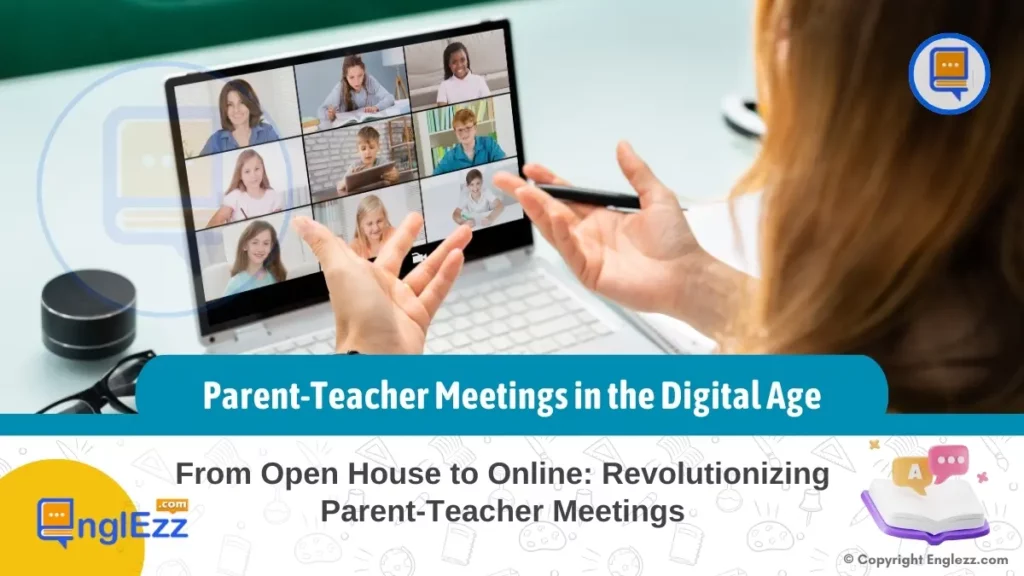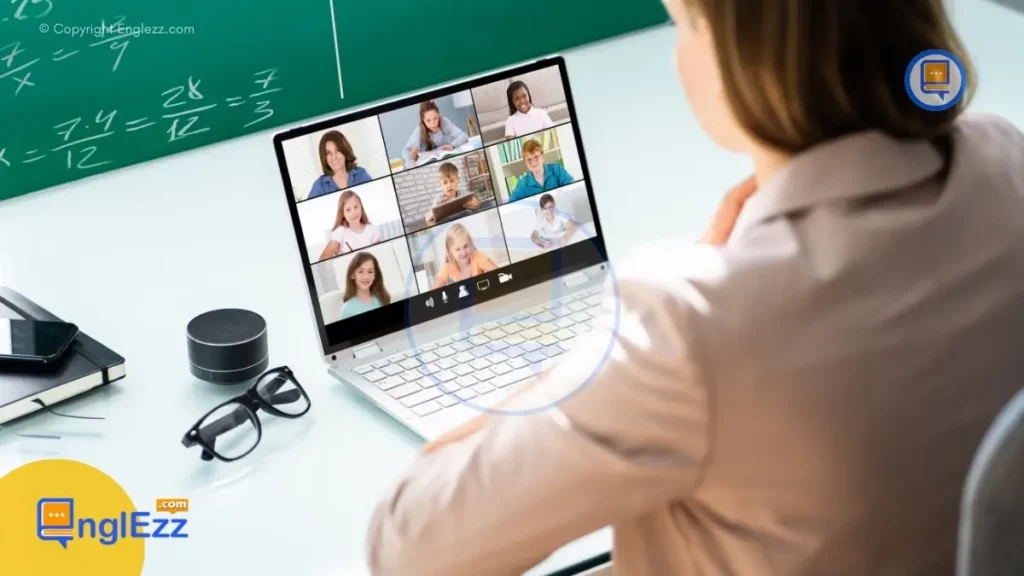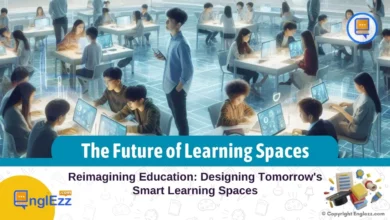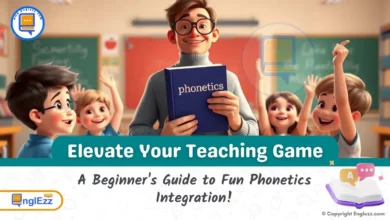In the ever-evolving landscape of education, the traditional foundations of parent-teacher meetings have undergone a remarkable metamorphosis, ushered into the digital age with a breath of innovation and connectivity. Discover the future of parent-teacher meetings in the digital age and how virtual platforms are enhancing collaboration.
As we embark on this enlightening journey through the corridors of educational transformation, we find ourselves at the intersection where technology intertwines with pedagogy to revolutionize the essence of parental involvement and teacher collaboration. The evolution from Open House gatherings to virtual realms signifies not just a shift in mode but an amplification of accessibility and engagement for parents, teachers, and school administrators alike.
Table of Contents
- The Evolution of Parent-Teacher Meetings in the Digital Age
- The Rise of Virtual Meetings
- Utilizing Scheduling Apps for Seamless Coordination
- Empowering Parents with Online Resources
- Success Stories: Bridging the Gap Between Home and School
- Enhancing Communication Through Interactive Platforms
- Adapting to Changing Needs in Education
- Optimizing Engagement Through Digital Solutions
- Promoting Collaboration Between Parents, Teachers, and Administrators
- Embracing Technological Advancements in Education
- Embracing Innovation for Future Success
- FAQs:
- Q: How can virtual meetings enhance communication between parents and teachers?
- Q: What are the benefits of using scheduling apps for parent-teacher meetings?
- Q: How do online resources empower parents in their children’s education?
- Q: Why is continuous communication essential between parents and teachers beyond scheduled meetings?
- Q: How can collaborative efforts among parents, teachers, and administrators benefit student learning outcomes?
The Evolution of Parent-Teacher Meetings in the Digital Age
Embarking on this quest to explore the nuances of modernized parent-teacher interactions unveils a tapestry woven with threads of technological empowerment and communicative synergy. With an unwavering commitment to enhancing educational experiences through digital means, we delve deep into the realm where pixels meet purpose in fostering meaningful connections between home and school.

By harnessing the transformative potential embedded within digital tools, we unravel a narrative that transcends conventional boundaries, breathing new life into what was once considered routine discourse. Join us as we navigate this dynamic landscape, discovering how technology serves as a catalyst for inclusivity, understanding, and lifelong learning in shaping the future of parent-teacher engagements.
The Rise of Virtual Meetings
In an era marked by digital innovation, the landscape of parent-teacher meetings has seen a remarkable shift towards virtual platforms. The convenience and accessibility offered by virtual meetings have transformed the traditional model, making it easier for parents and teachers to connect amidst hectic schedules. Through video conferencing tools like Zoom or Google Meet, parents can now engage in meaningful discussions with teachers from the comfort of their homes or workplaces. This shift not only saves time but also eliminates barriers such as long commutes or conflicting commitments, opening up new possibilities for communication.
Virtual meetings present a myriad of benefits that extend beyond convenience. One significant advantage is the increased flexibility they provide both parents and teachers. Unlike traditional face-to-face meetings constrained by specific time slots, virtual meetings offer more scheduling options, accommodating varying availabilities and time zones. This flexibility promotes broader participation among parents who might otherwise struggle to attend in-person meetings due to work obligations or family responsibilities. As a result, virtual meetings foster greater inclusivity and collaboration between home and school, nurturing a stronger support system for student success.
An illustrative example of the power of virtual meetings lies in the story of Sarah, a working mother with a diverse work schedule that often conflicted with traditional meeting times at her child’s school. By embracing virtual platforms for parent-teacher interactions, Sarah could actively engage with her child’s educators without having to compromise her professional commitments.
This newfound convenience not only strengthened Sarah’s involvement in her child’s education but also allowed teachers to understand her perspective better. Such success stories highlight how virtual meetings transcend physical boundaries to create more equitable and engaging avenues for parent-teacher communication in today’s digital age.
Utilizing Scheduling Apps for Seamless Coordination
In the age of digital transformation, scheduling apps have emerged as indispensable tools for simplifying the coordination of parent-teacher meetings. These innovative apps revolutionize the traditional process by offering a seamless way to schedule appointments that accommodates the hectic lifestyles of both parents and teachers. By leveraging these platforms, individuals can easily book time slots that align with their availability, eliminating the back-and-forth communication typically associated with arranging meetings. This streamlining not only saves time but also enhances efficiency, allowing educators and parents to focus more on meaningful discussions during their interactions.
One example of a scheduling app making waves in the education sector is SignUpGenius. This platform provides a user-friendly interface where teachers can input their available meeting times and parents can select slots that suit their schedules best. With features like automated reminders and real-time updates, SignUpGenius ensures that appointments are kept organized and everyone stays informed without the need for constant follow-ups. Such apps not only facilitate smooth communication between all parties involved but also foster a sense of collaboration by promoting mutual respect for each other’s time commitments.
Moreover, scheduling apps play a crucial role in overcoming logistical challenges that may arise when coordinating face-to-face meetings in today’s fast-paced world. These tools offer flexibility by enabling virtual appointments, accommodating busy parents who may find it challenging to attend in-person meetings due to work or personal obligations. With the added convenience of being able to connect from any location, parents can engage in constructive dialogues with teachers without geographical constraints, fostering stronger relationships between home and school. By embracing scheduling apps for seamless coordination, educational institutions can enhance parent-teacher collaboration and ultimately contribute to better academic outcomes for students.
Empowering Parents with Online Resources
In today’s digital age, parents are increasingly turning to online resources as valuable tools to support their children’s education. From interactive learning platforms to educational apps, the realm of online resources offers a myriad of opportunities for parents to actively engage in their child’s academic journey. By leveraging these resources, parents gain access to a wealth of educational materials tailored to their children’s needs, enhancing their ability to reinforce learning concepts outside the classroom. For example, platforms like Khan Academy provide parent-friendly guides and practice exercises aligned with school curricula, enabling parents to track their child’s progress and offer targeted support.
Moreover, online resources not only empower parents to actively participate in their child’s education but also foster a deeper connection between home and school life. Virtual libraries and research databases enable parents to explore subject matter alongside their children, creating shared learning experiences that extend beyond traditional classroom boundaries. By utilizing online resources collaboratively, parents can enrich discussions at home, supplement class lessons, and encourage continuous learning outside formal schooling hours. This collaborative approach not only enhances parental involvement but also reinforces the notion that education is a joint effort involving both educators and families.

Furthermore, the positive impact of online resources on parental involvement cannot be understated. By providing convenient access to information regarding curriculum updates, school events, and academic performance metrics, these resources empower parents to stay informed and engaged in their child’s educational journey. For instance, parent portals integrated within school systems allow parents to monitor attendance records, grades, and teacher feedback in real-time.
This transparency fosters open communication between teachers and parents while facilitating proactive measures for addressing any educational challenges promptly. Ultimately, by embracing online resources as key allies in supporting children’s learning endeavors, parents can play a more active role in nurturing academic success and personal growth.
Success Stories: Bridging the Gap Between Home and School
In the realm of parent-teacher partnerships, success stories serve as beacons illuminating the path to enhanced educational experiences. One such narrative unfolds at Maple Tree Elementary, where a dedicated group of teachers leveraged online resources to engage parents in their children’s learning journey. By sharing interactive educational platforms with families, teachers witnessed a surge in parental involvement and student motivation. Through virtual meetings enriched with multimedia elements, parents became active participants in shaping their child’s academic growth, leading to remarkable improvements in classroom performance and overall wellbeing.
Beyond traditional boundaries lies the story of Oak Ridge High School, where the synergy between educators and parents transformed conventional parent-teacher interactions. By embracing scheduling apps for seamless coordination, teachers at Oak Ridge effectively managed meeting schedules while accommodating diverse parental needs. This innovative approach not only simplified logistical challenges but also nurtured a culture of collaboration and understanding between home and school. As a result, students experienced unprecedented support from all fronts, fostering an atmosphere conducive to holistic development and academic excellence.
Across different educational landscapes, tales of triumph echo through the halls of innovation and adaptability. Take the case of Sunflower Academy, where dynamic communication platforms bridged gaps between teachers and parents, catalyzing continuous dialogue beyond scheduled meetings. This ongoing exchange not only facilitated real-time feedback on student progress but also fostered a sense of shared responsibility for shaping young minds. Through these concerted efforts to enhance communication and partnership, Sunflower Academy cultivated an environment where every voice was valued, forging strong bonds that propelled students towards academic achievement and personal growth with unwavering support from both home and school.
Enhancing Communication Through Interactive Platforms
In the ever-evolving landscape of education, interactive platforms serve as invaluable tools for fostering ongoing communication between parents and teachers. These platforms extend beyond traditional parent-teacher meetings by offering a seamless channel for dialogue that transcends physical boundaries. By embracing interactive platforms, parents and teachers can engage in real-time discussions, share updates, and collaborate on strategies to support student learning effectively.
One such example of an interactive platform revolutionizing parent-teacher communication is ClassDojo. This platform allows teachers to send instant messages, photos, and updates directly to parents, providing them with a glimpse into their child’s daily activities and progress. Parents can also communicate with teachers easily, fostering a continuous feedback loop that enhances student monitoring and support. By enabling this transparent and accessible mode of communication, interactive platforms like ClassDojo empower parents to actively participate in their child’s educational journey.
To empower ELT students through alternative assessment methods, prioritize incorporating opportunities for student voice and choice in assessment tasks. Allow students to select topics of interest or propose project ideas that align with their passions. By integrating student interests into assessments, you can enhance engagement and motivation, leading to more meaningful learning outcomes. For example, consider giving students the freedom to choose how they showcase their language skills, whether through a presentation, a digital project, or a performance piece.
Moreover, interactive platforms play a vital role in improving student progress monitoring through regular updates on academic achievements, behavioral insights, and individualized learning strategies. These platforms promote transparency and collaboration between parents and teachers, ensuring that all stakeholders are aligned towards the common goal of supporting student success. By leveraging the power of technology to facilitate ongoing communication, schools can create a holistic ecosystem where students thrive academically and socially.
By recognizing the significance of establishing continuous dialogue through interactive platforms, parents and teachers can cultivate a collaborative partnership that transcends conventional boundaries. These digital solutions not only enhance communication efficiency but also strengthen the bond between home and school environments. Embracing these innovative tools paves the way for a more interconnected educational experience where all stakeholders work harmoniously towards nurturing well-rounded learners equipped for future challenges.
Adapting to Changing Needs in Education
In a rapidly evolving educational landscape, adapting to changing needs is essential to meet the diverse requirements of today’s students. Schools and educators must embrace innovative strategies that resonate with modern learners while addressing societal shifts and technological advancements. By staying abreast of educational trends, teachers can tailor their approaches to ensure optimal support for students. For example, recognizing the growing importance of digital literacy skills, educators are integrating coding classes and cybersecurity awareness into their curriculum to prepare students for the digital age.
To effectively navigate these changes, educators can leverage professional development opportunities and collaborative networks to stay informed about best practices in education. Engaging in ongoing training programs not only enhances teaching methods but also fosters a culture of continuous learning within schools. Additionally, fostering a growth mindset among both educators and students promotes adaptability and resilience in the face of change. Through workshops, webinars, and peer-to-peer interactions, teachers can exchange ideas and strategies that cater to evolving student needs.
Moreover, embracing inclusive practices is crucial for supporting diverse learners in classrooms. Differentiated instruction techniques allow teachers to cater to individual learning styles and abilities, creating an environment where every student can thrive. By incorporating adaptive technologies such as specialized software or assistive devices, educators can provide personalized support tailored to each student’s unique requirements. Ultimately, by embracing adaptable approaches that prioritize student-centered learning and holistic development, schools can ensure that they remain agile in meeting the ever-changing needs of today’s learners.
Optimizing Engagement Through Digital Solutions
In the realm of parent-teacher interactions, digital solutions have proven to be transformative in enhancing engagement and collaboration. By harnessing innovative technology, educators can create dynamic and immersive experiences that resonate with both parents and teachers. For instance, virtual reality (VR) simulations can transport parents into the classroom environment, allowing them to witness firsthand the learning activities and progress of their child. This immersive approach not only fosters a deeper understanding of educational practices but also strengthens the bond between home and school.
Moreover, gamification tools offer an interactive way to involve parents in their child’s education journey. By turning parent-teacher meetings into engaging games or challenges, educators can effectively capture the attention and participation of caregivers. These gamified experiences not only make the communication process enjoyable but also encourage active involvement from all parties involved. Through digital gamification, parents are motivated to be more invested in supporting their child’s learning endeavors, creating a more collaborative educational ecosystem.
Additionally, leveraging communication platforms that feature multimedia elements such as videos, infographics, and interactive presentations can further enrich parent-teacher interactions. Visual aids are powerful tools for conveying information effectively and stimulating meaningful discussions. By presenting data visually or sharing educational resources through multimedia formats, teachers can cater to various learning styles and preferences among parents. This approach not only enhances engagement during meetings but also reinforces key messages that resonate long after the interaction has ended.
When implementing alternative assessment methods in ELT, ensure that students have a clear understanding of the assessment criteria from the beginning. Clearly outline what is expected of them in terms of content, language proficiency levels, creativity, and overall presentation. Providing transparent criteria helps students focus on specific learning objectives and enables them to self-assess effectively throughout the process. For instance, create rubrics or checklists that break down the assessment components to guide students on how they will be evaluated.
Embracing innovative digital solutions not only optimizes engagement during parent-teacher meetings but also paves the way for a more connected and proactive approach to education. By prioritizing interactive technologies that foster collaboration and understanding, school communities can cultivate stronger relationships built on shared goals and mutual respect. Through these tailored digital experiences, parent-teacher interactions evolve from formalities into meaningful exchanges that inspire continuous growth and support for student success.
Promoting Collaboration Between Parents, Teachers, and Administrators
In the realm of education, collaboration emerges as a cornerstone for building strong foundations that nurture student growth. Encouraging partnerships among parents, teachers, and school administrators lays the groundwork for an inclusive learning environment where every stakeholder plays a vital role. By fostering open communication channels and shared objectives, this approach paves the way for cohesive efforts that revolve around enhancing student outcomes. A prime example of successful collaboration can be seen in joint decision-making processes where all parties contribute their unique perspectives to create comprehensive strategies tailored to meet the diverse needs of students.
Unifying forces between parents, teachers, and administrators not only enriches the educational landscape but also amplifies the impact each individual can have on a student’s academic journey. Through collaborative initiatives such as regular progress updates shared amongst all stakeholders or joint goal-setting sessions, a sense of collective responsibility is fostered. This collective ownership nurtures a supportive ecosystem where everyone is invested in creating a conducive learning environment that prioritizes student success above all else.
One inspiring instance of effective collaboration is when schools engage parents in curriculum planning discussions, allowing them to provide valuable insights based on their understanding of their child’s strengths and areas for growth.
It is essential to highlight the significance of unified endeavors in driving positive educational outcomes. When parents are engaged partners in their child’s learning process and teachers collaborate closely with both parents and administrators, the synergy created has the potential to transform traditional educational approaches into dynamic and responsive frameworks. By aligning goals and strategies through mutual respect and understanding, these collaborations become catalysts for innovative solutions that address challenges proactively.
An outstanding illustration of this collaboration can be observed in schools where parent-teacher associations work hand in hand with administrators to implement initiatives promoting parental involvement and community engagement within the educational setting.
Embracing Technological Advancements in Education
As we reflect on the evolution of parent-teacher meetings in the digital age, it becomes evident that embracing technological advancements has revolutionized these interactions. By promoting collaboration between parents, teachers, and administrators, schools can create a supportive ecosystem where everyone shares a common goal – the success of the students.
This interconnected network fosters open communication, encourages transparency, and allows for collective strategies to enhance student learning outcomes. For instance, when parents, teachers, and administrators collaborate using online platforms like virtual classrooms or school portals, they can align efforts to provide holistic support to students both at home and in school.
Foster a culture of peer collaboration and feedback within your ELT classroom when using alternative assessment methods. Encourage students to work together on projects, provide constructive criticism to one another, and engage in reflective discussions about their language development. Peer interactions can enhance communication skills, cultural understanding, and teamwork while also offering diverse perspectives on language use. Consider organizing peer review sessions where students can exchange insights and support each other’s growth in language proficiency.
Moving forward, it is crucial for all stakeholders in education to adopt a forward-thinking mindset that welcomes innovation as a driving force for improved educational experiences and outcomes. Embracing technology not only enhances the efficiency of parent-teacher meetings but also transforms them into dynamic exchanges that transcend traditional boundaries. By leveraging digital solutions such as interactive platforms or scheduling apps, schools can create engaging environments that promote continuous dialogue and meaningful connections among all involved parties. These innovations not only streamline communication but also contribute to building strong partnerships based on trust and shared aspirations.
In this era of rapid technological advancement, staying abreast of emerging trends in education is imperative for educators and parents alike. By adapting to changing needs in education through flexible approaches and versatile tools, schools can effectively cater to the diverse requirements of students while fostering a culture of lifelong learning.
Encouraging proactive engagement with digital solutions ensures that parent-teacher meetings evolve into collaborative spaces where innovative ideas are exchanged freely, leading to enriched educational experiences for all participants. Ultimately, by embracing technological advancements with enthusiasm and foresight, we pave the way for a future where education is truly transformative and inclusive.
Embracing Innovation for Future Success
As we reflect on the remarkable journey of parent-teacher meetings from traditional gatherings to virtual interactions, one thing remains clear: the power of technology in revolutionizing how parents, teachers, and administrators collaborate for student success.
The shift towards digital solutions has not only made communication more convenient and accessible but has also reinforced the importance of fostering strong partnerships between home and school. By leveraging tools like scheduling apps, online resources, interactive platforms, and virtual meetings, education stakeholders have discovered new avenues for meaningful engagement and continuous dialogue.
In this digital age where adaptability is key, embracing technological advancements in education can lead to transformative outcomes for all involved. By staying abreast of evolving trends and creatively utilizing innovative resources, we pave the way for enhanced educational experiences that cater to diverse needs. As we envision a future where collaboration reigns supreme, let us remember that by working together with a shared vision and commitment to student well-being, we truly shape the landscape of learning for generations to come.
FAQs:
Q: How can virtual meetings enhance communication between parents and teachers?
A: Virtual meetings offer flexibility in scheduling appointments, allowing parents to engage with teachers conveniently from any location. This mode of interaction facilitates open dialogue and fosters stronger partnerships between home and school.
Q: What are the benefits of using scheduling apps for parent-teacher meetings?
A: Scheduling apps streamline the appointment booking process by eliminating back-and-forth communication for setting up meetings. They save time for both parties involved and reduce logistical challenges commonly associated with arranging face-to-face encounters.
Q: How do online resources empower parents in their children’s education?
A: Online resources provide parents access to educational materials and tools that support their involvement in their child’s learning journey. These resources offer insights into curriculum expectations, learning progress tracking, and strategies for supporting academic growth at home.
Q: Why is continuous communication essential between parents and teachers beyond scheduled meetings?
A: Continuous communication ensures ongoing feedback exchange about students’ progress, challenges faced, and areas requiring intervention or support. It fosters a collaborative approach to addressing educational needs proactively while promoting a holistic view of student development.
Q: How can collaborative efforts among parents, teachers, and administrators benefit student learning outcomes?
A: Collaborative partnerships create cohesive support systems around students by aligning goals, strategies, and interventions across home and school environments. When stakeholders work together harmoniously towards shared objectives, students benefit from consistent guidance tailored to their individual needs.
By implementing these practical tips, educators can elevate the effectiveness of parent-teacher meetings in embracing technological advancements for positive educational outcomes. Embracing innovation while maintaining empathy and inclusivity will pave the way for meaningful partnerships that truly benefit students’ growth and development.








